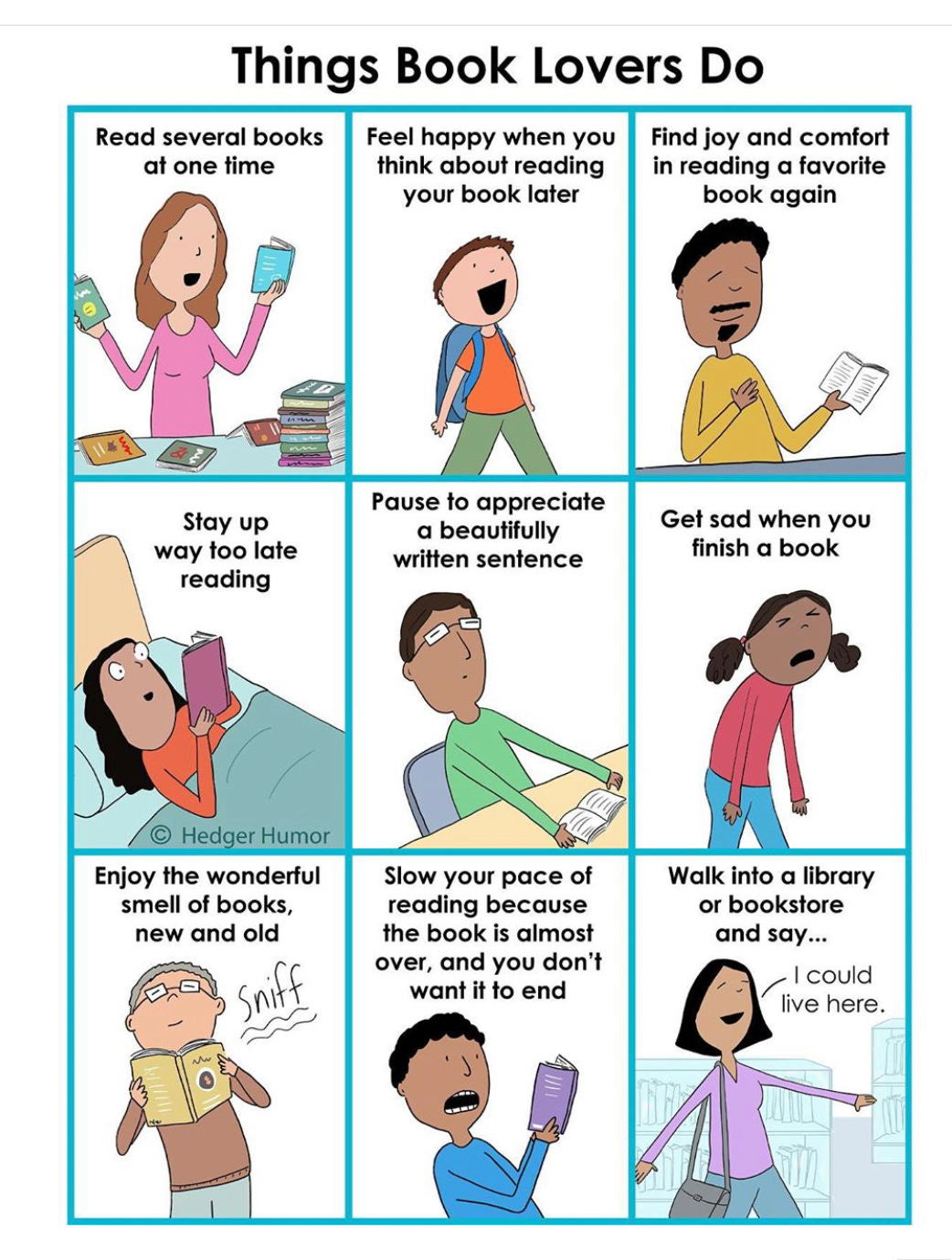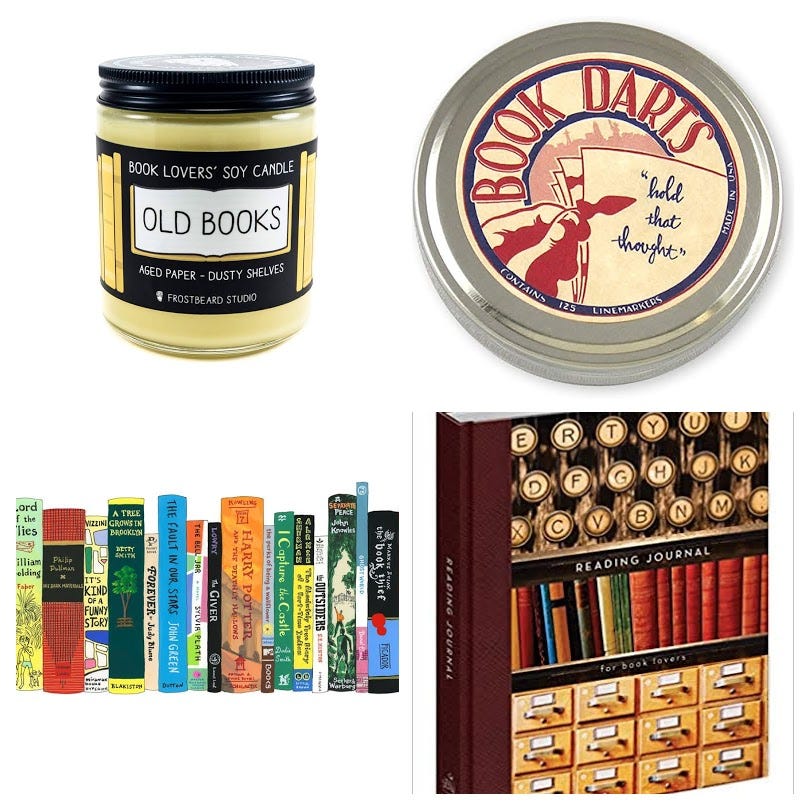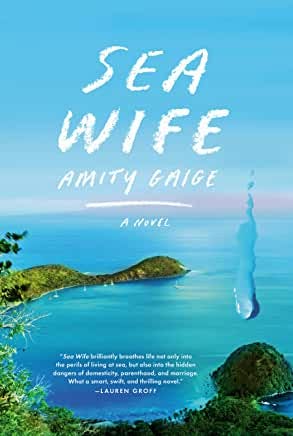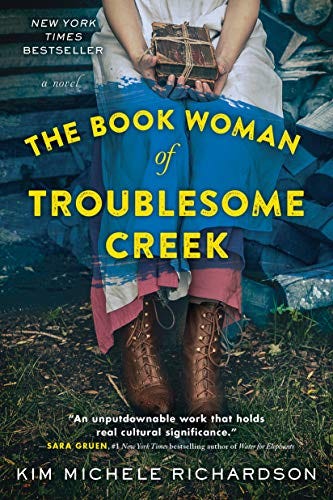Warning: Possible unpopular opinion ahead. In many of the book (and other pop culture) podcasts or articles that I listen or read, people are now often giving trigger warnings for content. I understand why it is being done – to help the reader avoid any type of trauma that would be upsetting. My concern is that announcing triggers when ever you discuss a plot, can give away key parts of books. I don’t always want to know what is coming up in a book. If someone recommends a great domestic thriller and then says “trigger warning for rape and domestic violence,” well that pretty much gives that away. Or a story about a missing teen that sites trigger warnings for child abuse and addiction really tips the hand to the direction of the plot. Knowing what is coming takes away some (all) of the unexpectedness of the story.
But as I did research online, I realized that being triggered is not just “feeling uncomfortable” to a reader, it may cause serious pain, panic attacks and anxiety. I understand trigger warnings are not necessarily for me. Since I do want to be empathetic to others, my solution would be for people to attach trigger warnings to show notes for podcasts or end notes for articles or book reviews. That way, if you are a sensitive reader, you can check for those warnings, and if you would prefer not to know, then you can avoid looking and maintain a level of surprise.
Note: I stumbled across the following resource: Lauren Hannah has a huge list both types of triggers and an alphabetical list of (mostly) young adult novels with associated triggers. I am linking it because this is a great resource if you know a particularly sensitive or younger reader who would benefit from trigger warnings.

This excellent comic is from the wonderful Adrienne Hedger. Her comics always seem to either reflect my present life or remind me of when my children were much younger. She brings me so much joy!
You Don’t Have to Rich to be a Patron
When you think of a patron, you may think of people dressed up in expensive clothes, attending cocktail parties, and purchasing art worth thousands of dollars. But I have been rethinking the idea of patronship and decided that I too am a patron of the arts, or at least of creativity. The definition of “patron” is a person who supports with money, gifts, efforts, or endorsement an artist, writer, museum, cause, charity, institution, special event, or the like. Doesn’t that actually describe most of us? What we choose to buy and support reveals what we are patrons of. Recently I am approaching it with more intentionality. When I enjoy what people make, I make an effort to support them. For me this means:
• Buying books from my favorite authors
• Buying books from podcasters whose work I listen to for free on a regular basis
• Ordering art on Etsy or directly from makers I follow on instagram
• Visiting off-the beaten path museums when traveling (pre-covid) & purchasing souvenirs from their gift shop or making a small donation.
• Attending author events, in person, but also via zoom (sometimes for a fee)
• Being a Patreon member of podcasts that I subscribe to (Patreon is a service that allows for donations in exchange for extra content)
• Owning a share (CSA) of a local farm where they teach agricultural skills to people with disabilities. We also subscribe to a local family-owned farm/brewery that helps support their efforts in exchange for fresh brewed beer.
• Buying honey, cheese, fruit and other products from producers in my local area. Also following them on Instagram so I can like their content and see what they are up to.
I am sure this list reminds you of things you are a patron of. Purchasing locally from small stores, independent retailers and Etsy also counts. I think that even in a world with giant retailers like Amazon, Target and Walmart, there is plenty of room to support those doing work we enjoy, appreciate and want to support.
FUN BOOKISH THINGS
Here are a few favorite bookish products that I use:

Booklover’s Old Books Soy Candle smells like an old book store - great for fall.
Book Darts to mark your place and for beloved quotes.
The Ideal Bookshelf makes amazing book graphics. I have a cookbook themed mug that I adore. She also makes custom prints for book lovers.
A Reading Journal to track what you are reading.
Book Reviews:

House Lessons is probably my favorite memoire of the year. Erica Bauermeister tells the story of buying and renovating an old home in Port Arthur, WA. She takes the reader through different aspects of homes relating to history and design as well as using homes as metaphors for marriage and children. Interspersed with personal vignettes are details illuminating history, architecture and why we build homes as we do. This story is multilayered and highly enjoyable. There were even some unexpected turns in her story. This charming book brings new and interesting insights into one of the most important purchases in our life (either buying or renting, we still pay). I highly recommend the audio version.

The Sea Wife was my most anticipated reads of the summer. Even though I really enjoyed it and the writing is excellent, I think I had the wrong idea about the book. I thought it was a suspense novel, where a small family heads out sailing for a year and excitement and adventure ensues. While this is true; this is not a suspense novel. It is a novel about marriage, untaken paths in life, and how couples perceive things differently. Also, with the couple in their 40’s, there is a lot of looking back on life and the choices they made. There is detail about sailing and what it is like to be at sea for extended periods of time, which I did find interesting. The form of the novel is clever, with the husband’s side being told through long journal entries in the captain’s log. This is an intelligent book; I just didn’t love it because I had expected different things.

The Book Woman of Troublesome Creek was a book club read for August. It is a very well researched historical novel that includes storylines about the Kentucky Book Program and the Blue Hill People of Kentucky. Though it started a bit slow, the story takes off and was a quick read. The author is excellent at creating vivid characters and setting so that you feel like you are in this time and place. Troublesome Creek is an excellent choice for book clubs because there are many aspects to discuss from the harshness of life in Appalacia, the discrimination faced by both people of color and women, the history of the Book program and the strangeness of the Blue Hill People.
And finally, one more recommendation from instagram:

Hoopla is the newest reading app that I am using. Just like Libby or Overdrive, download that App on your phone and link it to you library card. If you read electronic books or listen to audio books, it is worth it to add this to your options. The difference between Hoopla and Libby is that Hoopla is more like a subscription service such as Netflix. Their offerings will change but if they have a book available, there are unlimited copies, so there is no waiting. I was able to find House Lessons on Hoopla where it was unavailable through Libby.
Want more details? Check your local library or I found this explanation at another library: http://www.newburghlibrary.org/wp-content/uploads/Hoopla-vs-Libby.pdf




